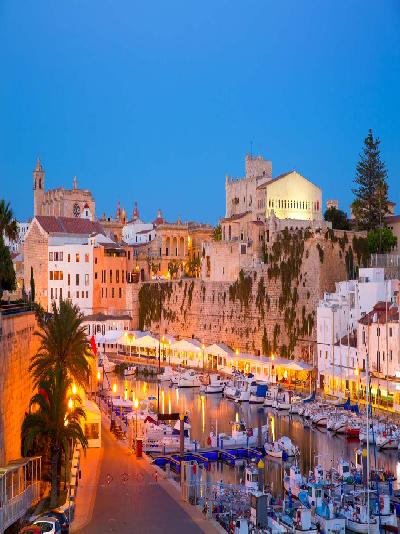 The second most important city in Menorca, Ciutadella was once the capital of the island. When British rule began in the 18th century, the capital moved to Mahón. The old town is interesting for its beautiful medieval streets and its baroque and gothic buildings, the Renaissance palaces and the aristocratic atmosphere. It is also the most "festive" city where most parties and celebrations are held.
The second most important city in Menorca, Ciutadella was once the capital of the island. When British rule began in the 18th century, the capital moved to Mahón. The old town is interesting for its beautiful medieval streets and its baroque and gothic buildings, the Renaissance palaces and the aristocratic atmosphere. It is also the most "festive" city where most parties and celebrations are held.
The name of the city comes from the word "citadel". Its history begins with the reign of the Carthaginians. Over the centuries, the city of Ciutadella has been under the rule of a wide variety of empires and invaders, from the Caliphate of Córdoba, that of Aragon, the destruction by the Turks to the transition to British occupation. However, the city has preserved its authenticity and charm and remains the cultural capital of Menorca.
The jewel of the city is the Gothic Cathedral of Santa María (14th century). Opposite is the Palacio de Olivas with its neoclassical façade, ancient frescoes and an ancient Roman statue. The Plaza de Born is surrounded by Renaissance buildings, among which the Palacio Salor stands out with its red-fronted sgraffito. Gougespe Maria Cuadradou street is decorated with Sas Voltas arches, built in the style of traditional Menorcan architecture. The Diocesan Museum of Menorca is located in the Seminary building from 1619.
Ciutadella is located in the westernmost point of the island of Menorca, 45 km from Mahón and 47 km from the airport.
Naveta des Tudons:
Naveta des Tudons is a stone monument 4 km from Ciutadella, an inverted nave crypt built in 1500 B.C. The ancient tomb is unique in its construction method: the stones in it are placed by a pyramid, without using cement.
La Mola Fortress (La Mola Fortress):
The Mola Fortress (Fortaleza de la Mola) was built on the La Mola peninsula, at the entrance to the port of Maona. In the 19th century it was the most important port in the Mediterranean and the fortress protected it from military invasions.
Fornells Tower:
La Torre de Fornells is a round tower fortress built in the 19th century by the British to defend the port of Fornells and the nearby castle of San Antoni.
Marlborough Fort:
Marlborough Fort was built in the 18th century on a rocky hill in St. Stephen's Bay to protect the port of Maon. Today, this cave-fortress houses a museum dedicated to English rule in Menorca.
Lloc De Menorca Zoo:
The Lloc De Menorca Zoological Center in Alajor offers exotic and local animals, a museum of ancient tools and a souvenir shop.
Monte Toro:
Monte Toro is the highest elevation in Menorca (358 m) and offers a panoramic view. At its top is the 13th century Virgen del Toro Santoario, the spiritual center of the island.
Saint Louis:
The municipality of Sant Lluís is located in the south-eastern part of the island. Seasonal rivers flow here and there are farms on fertile land.
Punta Prima Station
The Punta Prima station is 6 km from Sant Lluís. The houses here are built on the coast. The Punta Prima sandy beach is 200 meters long. Punta Prima is located between two ends and is open to the winds from the south.
Binisafua:
The coastal town of Binisafua has a beautiful little beach and several fish restaurants. Above this complex is a glide of planes going to Maon Airport.
Binibeca:
Binibeca is a small town 6 km from the center of Sant Lluís. Here is a unique architecture, a cozy beach in the bay, wonderful underwater landscapes.
Binidali:
A small and quiet town with a single restaurant and a safe and isolated beach in one of the most beautiful bays on the entire island.
Es Grau:
Es Grau is a small fishing village in the municipality of Mao. It is located behind the sand dunes, surrounded by forests. The local beach is considered the best on the island and is 600 meters long. The bay is protected from the winds by the rocky island of Kolom.
Cala en Porter:
The Cala en Porter spa is located in the south of Menorca. It is one of the oldest tourist centers on the island. A stream flows into the sea through the beach, forming a sandy slope. The bay of Cala en Porter is surrounded by rocks. The length of the beach is 150 m.
Cala Blanca:
Cala Blanca is located to the west of the island, in a small bay surrounded by rocky coasts and pine forests. The water is calm and the sand is light. The beach is 45 m long. In the surroundings of Cala Blanca are the stalactite caves of Parella with an underground lake.
